It preserves critical migratory bird habitat and supports farmers
Peterborough Examiner – July 6, 2022 – by Drew Monkman
When you enjoy your morning coffee, what comes to mind? Maybe the aroma, taste, warmth, and the pep-up it gives? Wouldn’t it be wonderful if you could also feel satisfaction that your choice of beans helps migratory birds and coffee farmers?
Most migratory songbirds spend late October through early April in Latin America and the Caribbean. This is half the year! For a large number of species, many of which breed right here in Peterborough County, winter refuge is often found in shade-grown coffee plantations – a way of growing coffee that, when done right, exists in relative harmony with the forest. If you care about migratory birds, switching to shade-grown, “Bird Friendly” certified coffee is one of the best and easiest ways to contribute to their conservation. Shade-grown farms are home to more bird species than any other agricultural landscape and are second only to undisturbed tropical forests in terms of their bird diversity. Most importantly, they represent some of the only remaining winter habitat in many areas.
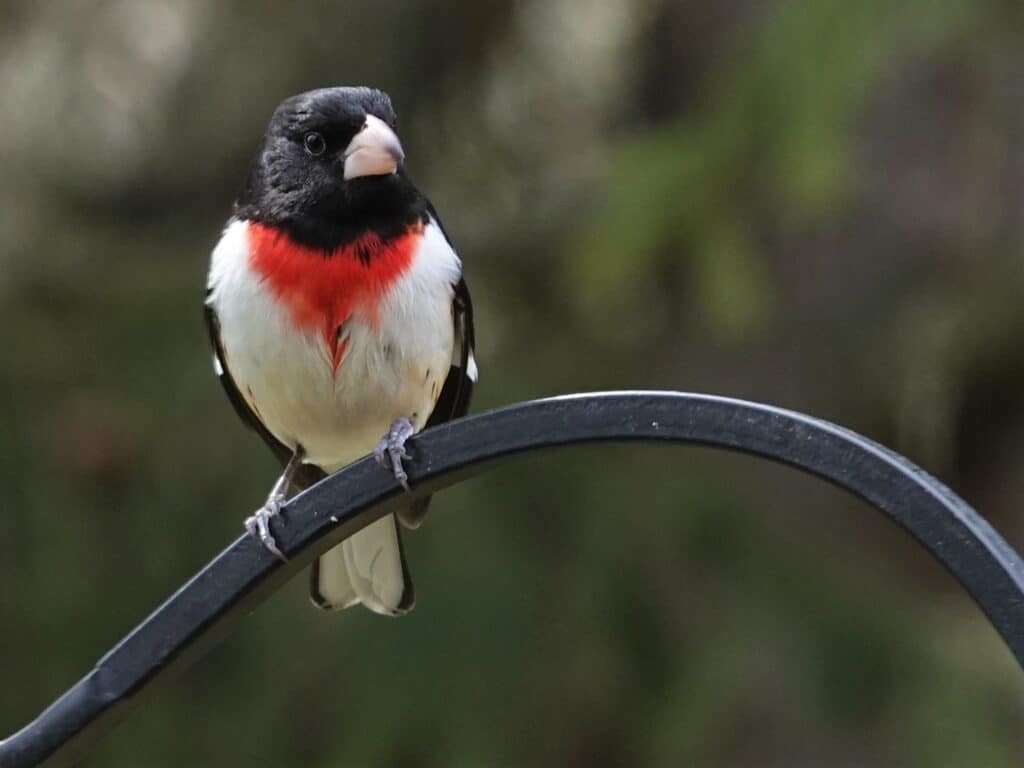
Disappearing habitat
The majority of our migratory songbirds overwinter in the forests of mid-elevation mountains. These include rose-grosbeaks, gray catbirds, scarlet tanagers, eastern wood-pewees, wood thrushes, and a host of warblers like ovenbirds and chestnut-sided. However, much of the forest cover at these elevations is gone – a full 80 percent in countries like Colombia. A big part of the reason is that trees are cut down to grow high-yield, full-sun coffee. Like a field of corn, these plantations are essentially biodiversity deserts. A staggering 75 percent of the world’s coffee is farmed with practices that leave no place for birds or other wildlife. Sun-grown coffee bushes also require huge inputs of harmful pesticides and fertilizers.
A bird-friendly farm
Up until recent decades, coffee was always grown under a canopy of trees that provides crucial shade. This is because traditional varieties of coffee do not grow well under direct sunlight. The shade trees also protect the bushes from damaging wind and rain and provide a natural mulch which helps to maintain soil quality. This, in turn, reduces the need for chemical fertilizers.
Even though this is a human-managed habitat, its importance to wildlife is undeniable. The reason is simple. The trees are a veritable smorgasbord of insects, nectar and fruit. Worms and insects abound in the leaf litter covering the soil below the trees.
If you were to take an early morning walk through a high-quality, shade-grown coffee plantation – something I’ve had the pleasure to do in Panama – you’d find yourself reacquainted with a host of familiar visitors. You might see rose-breasted grosbeaks – maybe the same ones that visited your feeders in May – dining on fruit; wood thrushes rummaging through the leaf litter for invertebrates; chestnut-sided warblers gleaning caterpillars from the undersides of leaves; and Baltimore orioles drinking nectar from flowers high in the trees. It is birds like these that connect shade coffee plantations in Latin America with backyards and cottages in the Kawarthas.
Most shade-grown coffees come from southern Mexico, Central America, and Peru. Coffees from Colombia and Brazil are more likely to be sun-grown.
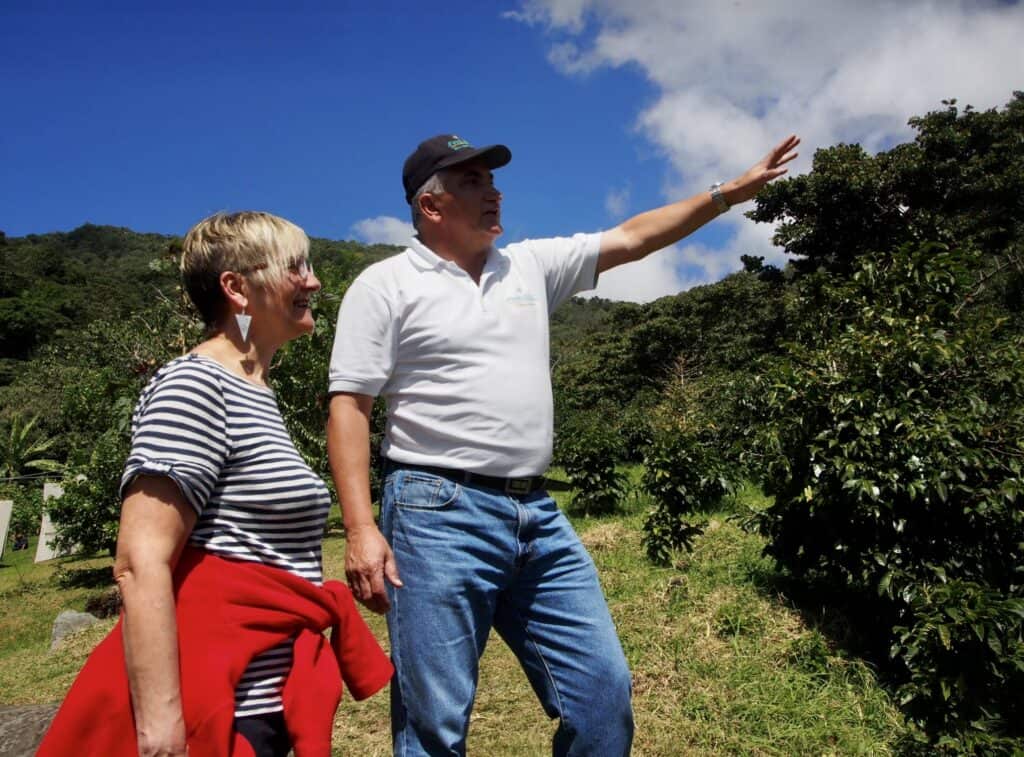
Bird Friendly certification
Organic, Fair Trade, Rainforest Alliance, Bird Friendly Smithsonian, and shade-grown – what’s up with all the certifications and labels? Well, it’s complicated. For example, there is no one definition for shade-grown. It could mean anything from a rich, shady forest towering over coffee bushes, or just the skimpy shelter of a few banana trees.
Suffice it to say that only “Bird Friendly Smithsonian” guarantees consumers that the coffee was, in fact, grown on farms that offer high-quality wildlife habitat. The Smithsonian Institution is a world leader in the global effort to save species and better understand ecosystems. Although Rainforest Alliance certification is similar, it is not as rigorous in its habitat requirements.
The farms are certified by third-party inspectors using strict, scientifically-backed criteria established by the Smithsonian Migratory Bird Center. To be certified, a farm must have at least 40 percent canopy cover, a minimum 12-metre tree canopy height, and at least 10 different species of native trees. Certification must also be made at the importer and roaster level. Certified products all carry the Bird Friendly Smithsonian label.
Certified farms are also Fair Trade – producers are paid fair wages – and 100% organic, which means no harmful pesticides are used. Right now, there are over 5,000 Bird Friendly certified farmers in 11 countries.
It’s important to keep in mind, however, that coffee farmers are vulnerable. Even though they are paid more per pound of coffee when certified,
certification itself can be costly. If there’s not enough demand for Bird Friendly coffee and farmers don’t see the benefits, these farms and habitats are at risk. Even if they love the forest, the farmer’s family will always come first. They may be tempted to cut down trees and move to higher-yield, sun-grown coffee or even to cattle farming. The bottom line is that we need them, they need us, and time is running out.
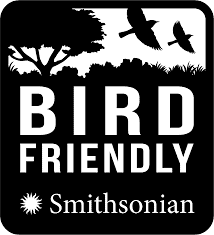
Where you come in
Canadians drink copious amounts of coffee – a thousand cups a year, on average. By switching to a Bird Friendly alternative we can have a big impact, both on the birds and the lives of the farmers. However, according to a 2021 study published in the journal “People and Nature”, the vast majority of birders have yet to make the switch. Often, they don’t really know what the certification means or where to find it. One problem is that the places where most coffee is sold — supermarkets and coffee shops — rarely offer Bird Friendly certified varieties.
I must admit that I was a late adopter, too. For years, I’ve simply opted for shade-grown or other certified specialty coffees that I naively assumed were also bird friendly. Now, having researched this issue and learning about an Etobicoke roaster called “Birds and Beans”, I’m purchasing their delicious coffee online at https://birdsandbeans.ca/ It is the only roaster in Canada to offer a 100% Bird Friendly certified range of coffees. Their coffee is certified Fair Trade and Canada Organic, too. The cost is similar to other specialty coffees and shipping is free if you spend $45 or more. My favourite is a bold variety called Nicaragua Wood Thrush.
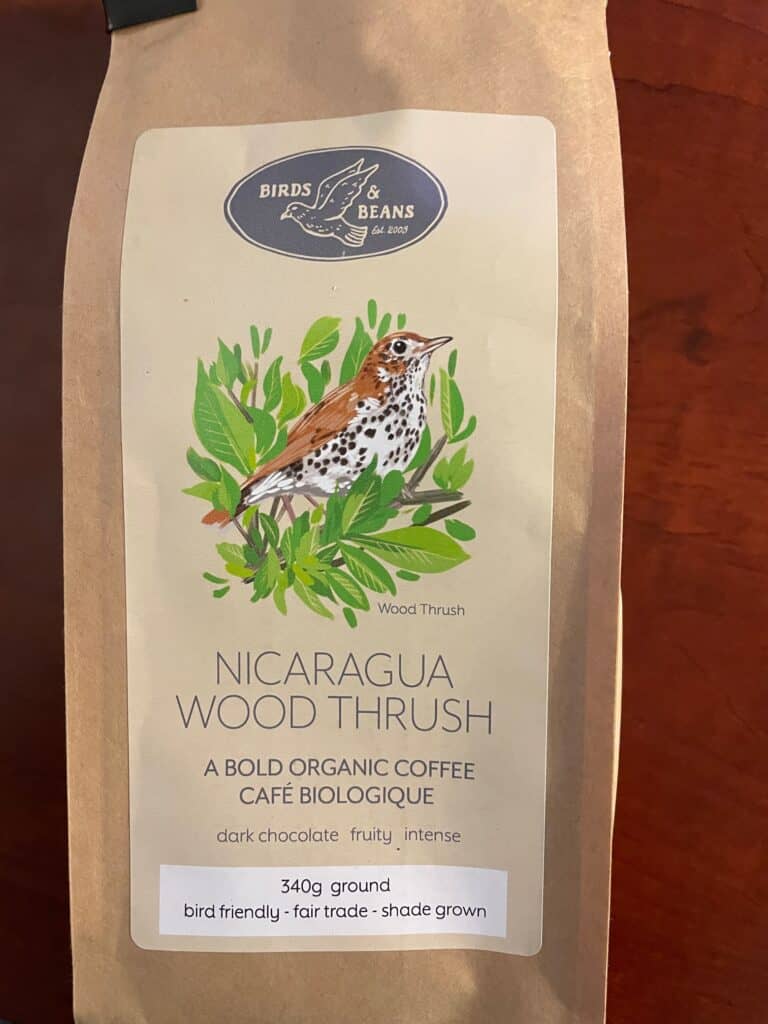
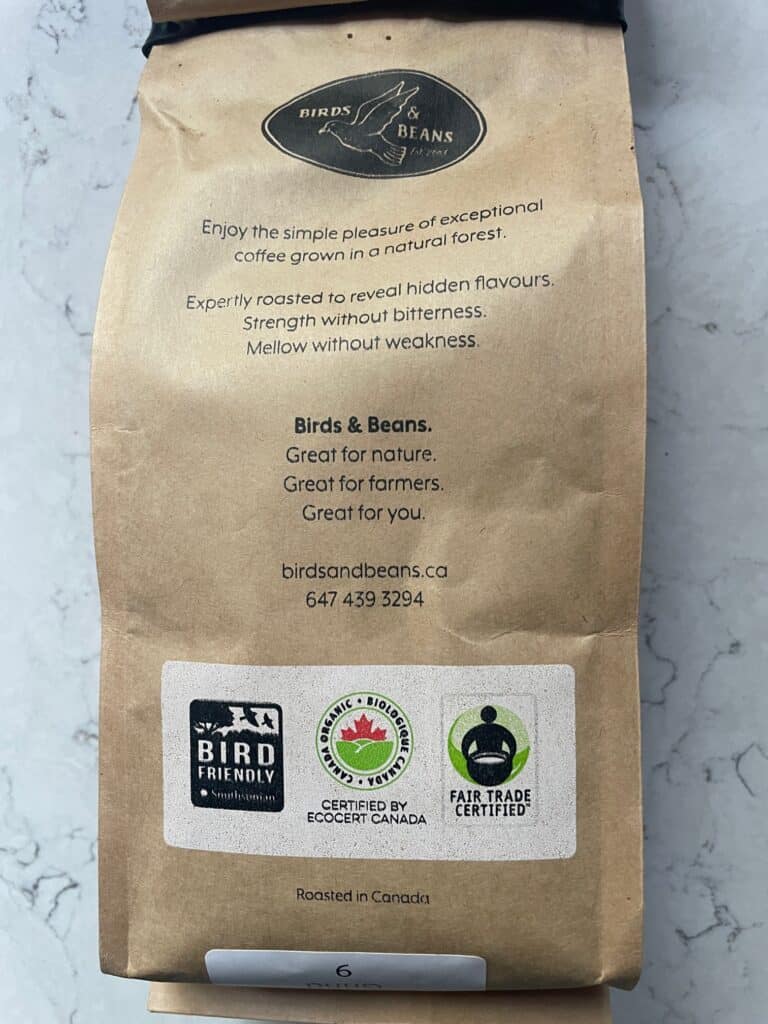
Only weeks ago, Peterborough received Nature Canada certification as a Bird Friendly City. Being able to purchase Bird Friendly coffee locally would be a wonderful way to support this designation. As far as I know, there are no roasters, retailers or cafes selling these coffees in Peterborough. We need to be asking them to do so.
By choosing Bird Friendly certified coffee, you preserve critical bird habitat, protect biodiversity, and support vulnerable farmers. You are also buying a product that tastes better, since the beans mature more slowly in the shade. There is real satisfaction in drinking an organic, bird-friendly and sustainable product. For more information on Bird Friendly coffee, migratory bird research, and other ways to help birds, visit the Smithsonian website at www.drinkbirdfriendly.com
CLIMATE CHAOS UPDATE
Alarm: On June 30, the U.S. Supreme Court restricted the ability of the federal Environmental Protection Agency (EPA) to regulate greenhouse gases. It upended decades of legal doctrine by ruling that Congress, on major issues, has to legislate specific direction for the EPA. Similar court-ordered restrictions might be applied to tougher methane emission rules that the EPA is writing up. This is very bad news because it seems to reject any wide-reaching regulatory attempt in the U.S. to deal with climate change. See https://tinyurl.com/nhdhb7dt
Carbon dioxide: The atmospheric CO2 reading for the week ending July 3 was 420.31 parts per million (ppm), compared to 418.14 ppm a year ago. Rising CO2 means more climate chaos and increasingly severe storms ahead.